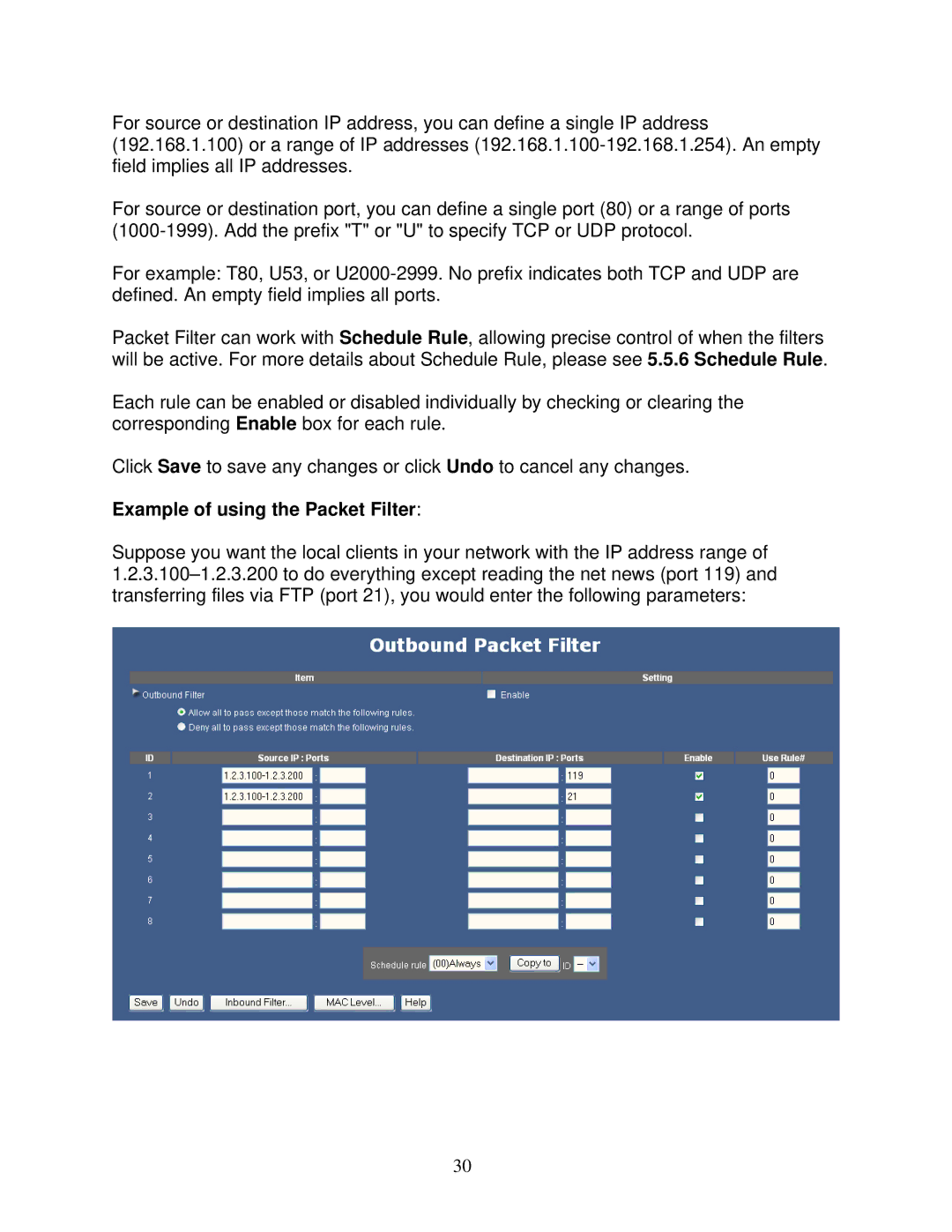
For source or destination IP address, you can define a single IP address (192.168.1.100) or a range of IP addresses
For source or destination port, you can define a single port (80) or a range of ports
For example: T80, U53, or
Packet Filter can work with Schedule Rule, allowing precise control of when the filters will be active. For more details about Schedule Rule, please see 5.5.6 Schedule Rule.
Each rule can be enabled or disabled individually by checking or clearing the corresponding Enable box for each rule.
Click Save to save any changes or click Undo to cancel any changes.
Example of using the Packet Filter:
Suppose you want the local clients in your network with the IP address range of
30
